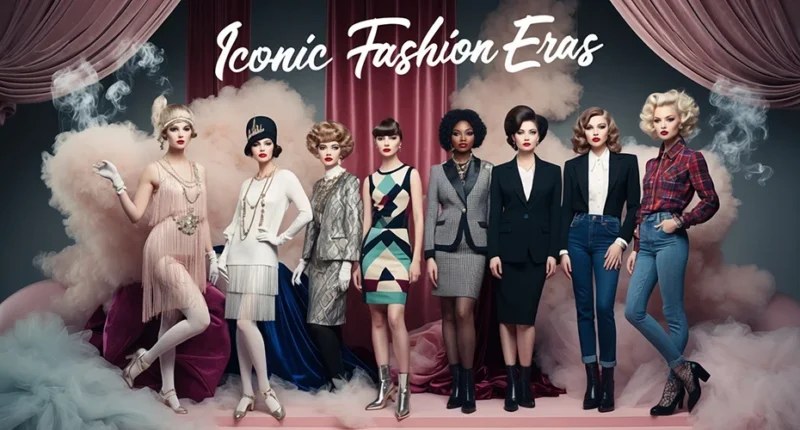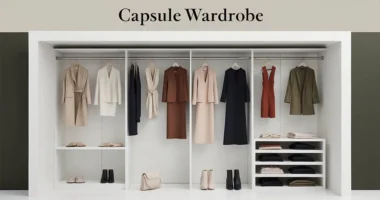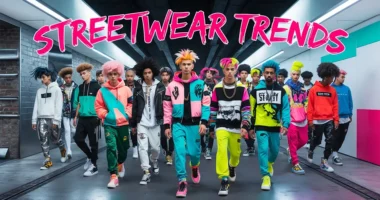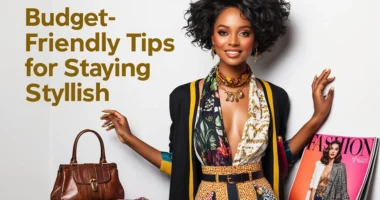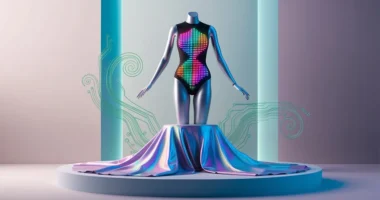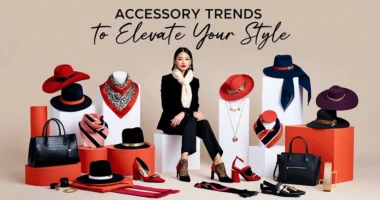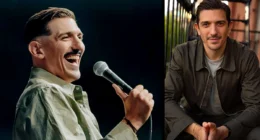Table of Contents
Fashion has always been more than just clothing; it tells the story of the times, the people, and the culture. Over the years, different fashion eras have shaped history, influencing not only what people wore but also how they lived and expressed themselves. From the extravagant styles of the 18th century to the bold looks of the 21st century, here’s a look at some of the most iconic fashion eras that have made a lasting impact.
The Roaring Twenties
The 1920s, often called the “Roaring Twenties,” was a time of cultural change, and fashion followed suit. After the First World War, people were eager to leave behind the restrictive styles of the past and embrace a more modern, free-spirited look. Women’s fashion, in particular, experienced a revolution with shorter skirts, bobbed haircuts, and the iconic flapper dresses. These dresses were loose and comfortable, allowing women to move more freely than ever before.
Men’s fashion in the 1920s was also stylish but more traditional, with well-tailored suits, fedoras, and pocket squares. The 1920s marked a time of boldness, independence, and the rise of the modern woman, and its fashion reflected those ideals.
The 1950s: Elegance and Glamour
The 1950s brought an air of elegance and glamour, largely influenced by Hollywood and iconic figures like Marilyn Monroe and Audrey Hepburn. After the restrictions of wartime fashion, the 1950s saw the return of more structured and feminine styles for women. Hourglass silhouettes became the trend, with wide skirts, tight waists, and voluminous petticoats. The classic “New Look” by Christian Dior, which featured a cinched waist and full skirt, defined this era.
Men’s fashion in the 1950s was equally sharp, with well-fitted suits, skinny ties, and the rise of casual wear, like denim jeans and leather jackets. This era was all about timeless style, with an emphasis on formality, glamour, and sophistication.
The 1960s: Revolutionizing Fashion
The 1960s was a decade of social revolution, and fashion played a big part in reflecting the changes. Youth culture took center stage, and the idea of personal expression through fashion grew stronger. The iconic miniskirt, popularized by designer Mary Quant, became a symbol of the era, representing freedom and a break from traditional styles. Bold patterns, psychedelic colors, and mod fashion were also hallmarks of the 1960s, as people sought to stand out and express individuality.
For men, the 1960s saw the rise of more casual, relaxed styles. The mod look with slim suits, turtlenecks, and Beatles-inspired haircuts became a trend. The fashion of the 1960s was all about experimentation, self-expression, and breaking away from old norms.
The 1980s: Power Dressing and Bold Statements
The 1980s was a decade known for its loud, bold, and sometimes excessive fashion. Power dressing became popular, especially for women in the workplace, with shoulder pads, oversized blazers, and pencil skirts being the go-to styles. The goal was to exude confidence and strength, and fashion was an important tool for doing so. This was also the era when designer labels like Versace, Armani, and Ralph Lauren became synonymous with wealth and status.
Men’s fashion in the 1980s was marked by a mix of casual and formal wear, with leather jackets, acid-wash jeans, and athletic wear becoming popular. The fitness craze also influenced fashion, with workout clothes and athletic-inspired outfits becoming everyday wear. The 1980s was a time of excess, both in fashion and in culture, with larger-than-life trends and statements.
The 1990s: Minimalism and Grunge
The 1990s saw a shift from the bold excesses of the 1980s to a more laid-back and minimalistic style. The grunge movement, popularized by bands like Nirvana, influenced fashion heavily, with flannel shirts, ripped jeans, and oversized sweaters becoming staples of the decade. At the same time, the rise of supermodels like Kate Moss and the popularity of minimalism led to a more pared-down, sleek look.
For men, the 1990s also saw the rise of casual, street-inspired fashion. Baggy pants, oversized T-shirts, and baseball caps were part of the everyday look. The 90s was a time of self-expression, but with a more relaxed approach compared to previous decades, embracing both simplicity and individuality.
The 2000s: Y2K Fashion and Tech Influence
The 2000s, or “Y2K” era, was a time when technology and the internet began to have a huge influence on fashion. Popularized by celebrities like Britney Spears and Paris Hilton, the Y2K style was characterized by low-rise jeans, sparkly tops, and bold accessories like chunky belts and hoop earrings. The fashion was all about fun, with lots of metallics, neon colors, and logo-heavy clothing.
At the same time, the rise of fast fashion made trendy clothing more accessible, and people were experimenting with mixing high and low-end styles. The 2000s were a transitional time for fashion, where the influences of the past were blended with a more modern, tech-driven approach.
The 2020s: Sustainability and Individuality
As we move into the 2020s, fashion continues to evolve. One of the biggest trends shaping fashion today is sustainability. More people are becoming aware of the environmental impact of fast fashion, and there is a growing movement toward buying less, but better-quality clothing. Vintage and second-hand shopping are also making a comeback as people look for more unique and eco-friendly alternatives.
Fashion in the 2020s is also marked by a focus on individuality and self-expression. People are moving away from trends that dictate what everyone should wear and embracing styles that reflect their personal tastes. Social media plays a huge role in shaping how people discover and share new trends, leading to an explosion of different styles and fashion subcultures.
Conclusion
Fashion has always been a reflection of the times, from the flapper dresses of the 1920s to the sustainability-focused wardrobes of today. Each fashion era tells a unique story, shaped by social, political, and cultural changes. These iconic fashion eras not only influenced what we wear but also how we see ourselves and the world around us. As we move forward, it’s exciting to think about how fashion will continue to evolve and what new eras will emerge.
